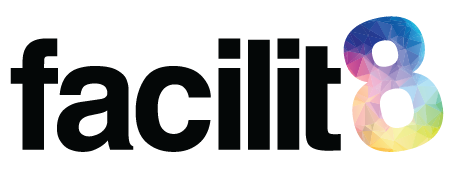What are Beacons?
Beacons are small location-specific Bluetooth transmitters that give off a constant signal which once discovered by a user, triggers, and alerts the user of specific information that is being transmitted.
Beacons work via an app such as BeaconNear, which acts as the hub of the information and alerts that you’ll receive as well as giving you the option to search for Beacons that you’re in range of.
Beacons themselves don’t store any information, they transmit information via cloud services by using your phones GPS, alternatively by using WiFi.
Beacons work within a proximity that is set by the business, ranging from immediate (within 30cm~) to near (5m) to far (200m), and even up to 700m with a military grade option.
What can beacons do?
Engage users by sending in-app push notifications
Send specific information depending on location (geofencing)
Send information in the users language without having to ask/select
Target users by age, gender, interests, etc
Give you insight into customer preferences and behaviour.
What can’t beacons do?
Send information/alerts to users who don’t have the app installed
Send information/alerts to users who don’t have Bluetooth enabled
Spam users (option to not receive notifications from specific businesses)
Store information, it is simply a transmitter, not a hard-drive
SkyWalk by Epicuest
The Tamborine Rainforest Skywalk App has been designed to enhance the visitors experience by presenting information and points of interest notifications as you walk through the beautiful Rainforest.
The Skywalk App uses Beacon proximity technology to present relevant content at the right time at the right place!
The information provided throughout this walk is available in English, German, Japanese and Simplified Chinese. Once downloaded, the Skywalk App will automatically detect the language settings on your Smartphone and display the appropriate language for you.
See how Beacon Technology has revolutionised SkyWalk here!
More Examples
The Australian Museum
The Australian Museum is progressively rolling out a sophisticated beacon strategy across its exhibits.
Currently in stage 4 of this strategy, the museum has developed an application targeted towards children.
This app essentially enables the user to participate in a scavenger hunt throughout the museum.
This gamifies the experience of visiting the exhibits using beacon technology at its core.
The Trailblazer app uses a ‘radar bar’ to calculate the distance between the device and the object (beacon) the kid is trying to find. It uses the hot and cold radar to visualise this to users.
Audemars Piguet
Retail marketers have been leading beacon adoption over the last 3 years.
The most widespread use of beacons in stores is to engage the customer on their mobile devices with real time product information.
This effectively turns your smartphone into a knowledgeable sales assistant, reducing the need to have extra employees on the floor.
Especially for luxury brands, where the standard for customer service is generally much higher, beacons are a distinct competitive advantage.
Audemars Piguet is a luxury watch retailer with stores in Sydney. They recognised the need for their employees to be well informed about product details.
When a customer picks up one of its watches, it automatically opens a screen on a nearby smart device with information about that watch — prices, technical specifications, other colours and bands not being displayed, and so on.
This gives sales assistants useful, real-time data that increases the likelihood of making a sale.
MCG
The MCG has been experimenting with beacon technology over the last 2 years to gain a deep understanding of customers’ engagement, before rolling out a larger campaign.
Their fist beacon trial was in 2014 during AFL games at the stadium. Fans could win one of 50 Four ‘N Twenty pies if they downloaded a pass to their Android or iPhone smartphone.
MCG staff were equipped with beacons that triggered location-specific messages via Bluetooth to fans’ smartphones as they move around the stadium during each match.
Patrons who spotted the pie staff and presented their notification message could receive a free pie.
The aim of this trial was just to gain an understanding of how the technology worked and also test different marketing and promotional channels.
In Minimum Viable Product mode, they were able to gain data on how people engaged with the beacons and the app and use this to inform decisions on the future applications of the technology.
The MCG is currently in talks with various AFL clubs and 3rd party retailers including Coca-Cola and Carlton United Breweries to discuss how beacons could become a permanent part of the fan experience.
Brady Clements is a Front-End Developer and Business Development Manager for custom web development company BlueSky Digital Labs.
BlueSky are constantly working with cutting edge technology such as Beacons in order to make the synergy between people and their screens as seamless and natural as possible. Not only do they develop apps, they integrate various systems in order to make your work-life as simple as possible also.
They create, design and develop with functionality at the core, everything is custom so that anything is possible.
